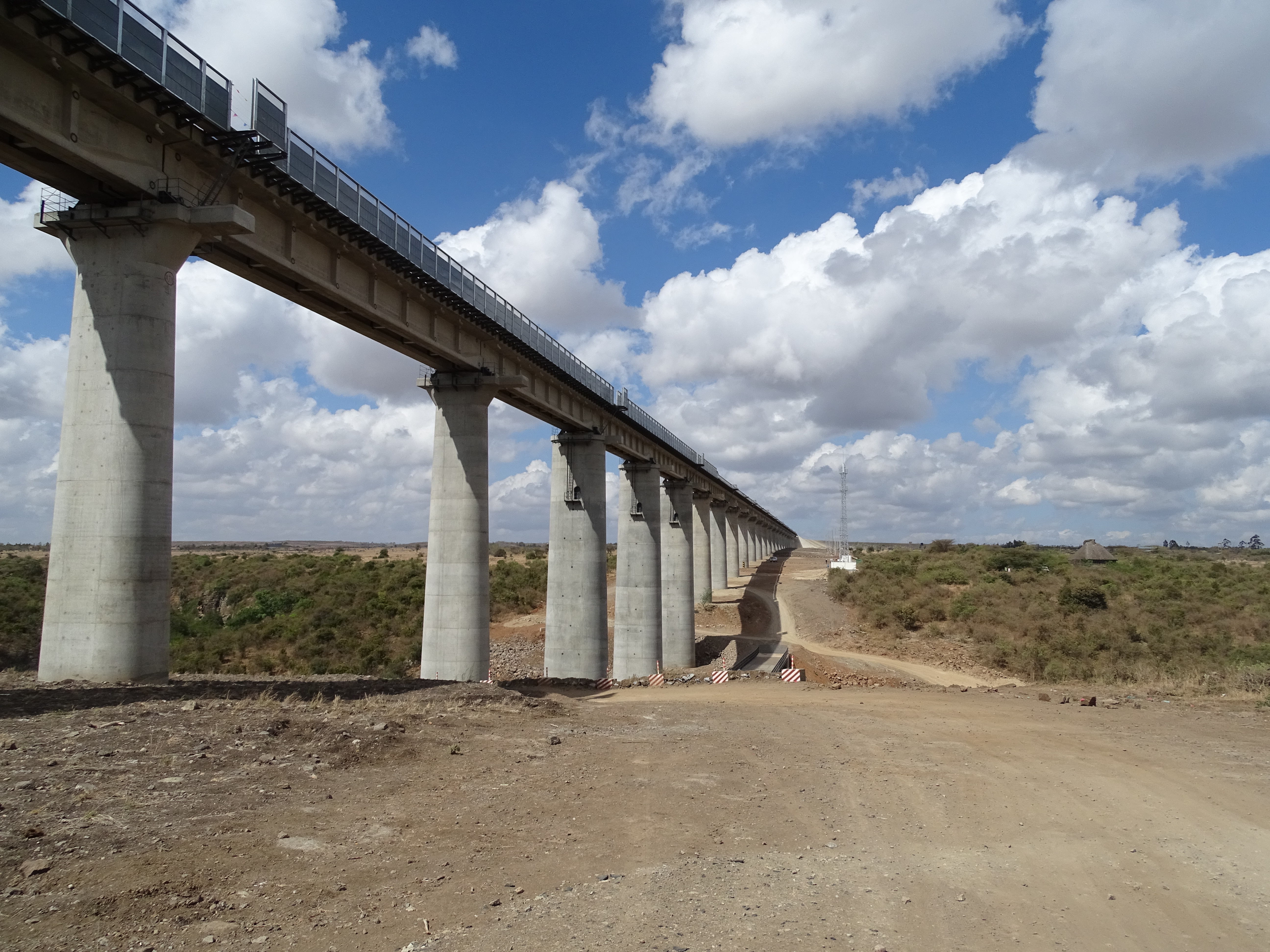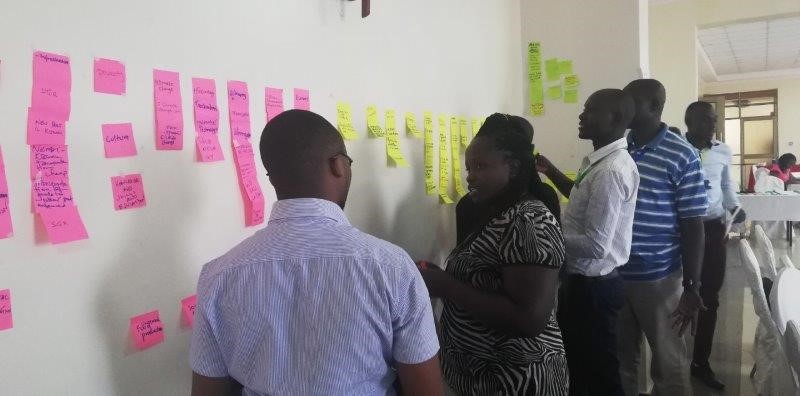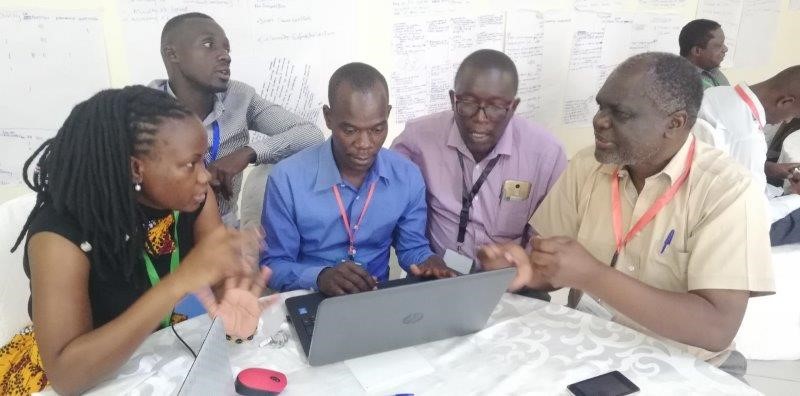
Anticipating the arrival of the Standard Gauge Railway along Lake Victoria
To gain insight into the web of complexities that surround mega-development projects, Dr. Jessica Thorn from the University of York coordinated a Participatory Scenario Planning Workshop in Kisumu in August 2019.
The complex social-ecological system of Lake Victoria
Lake Victoria is the largest lake in Africa, the second largest freshwater lake in the world, and the chief reservoir of the Nile. Located on the lake’s shores, Kisumu city is a key gateway for Kenya and serves as the main commercial land and air transportation hub. However, in the next year, the arrival of the new Standard Gauge Railway (SGR) will substantially transform future trajectories. This could have implications for the population of 44.9 million people, fisheries, trade, agriculture, climate and biodiversity.
Kisumu city was chosen as one of the six cities for the workshops because the Kenya Railways Corporation plans to connect Kenya’s capital of Nairobi to Malaba at the international border with Uganda. The anticipated stretch running from Naivasha to Kisumu will measure 262km and will upgrade the port of Kisumu. Considering the scale and extent of the project, the railway provides important insights into how sustainable, resilient and inclusive delivery of development corridors can be achieved.

Why use scenarios to model uncertainty and manage risk?
Participatory scenario planning is a powerful tool in strategic foresight and collaborative design. It brings diverse groups of people together from local to international levels in government, public, research and private institutions. In a transdisciplinary spirit, we worked with different stakeholders including the Lake Victoria Development Authority, Lake Victoria Tourism Association, Kenya Wildlife Service, Kenya Forest Research Institute, Kenya Marine and Fisheries Research Institute, Tinada Youth Organization, Eco-finder, Tropical Institute of Community Health and Development, UN Habitat, and public private partnerships including the Kisumu City Business Community, amongst others.
Workshop focus and outcomes

A view to the past to inform future adaptation pathways
The timeline of interest was from 1985 (when the British Empire established the East Africa Protectorate), to 1964 (independence of the Republic of Kenya), to the present (2019). Participants investigated how the arrival of the meter-gauge railway in Kisumu in 1901 and other historic dynamics significantly enhanced trade at the lakeside city. We then explored present and future land use drivers of change and envisioned future scenarios, both in the short-term (i.e. 2030 connected to the Sustainable Development Goals), and long-term (i.e. 2063, connected to the African Union Agenda).
We asked, what do you understand by the term development corridors?
The constituents of Kisumu considered development corridors to be integrated infrastructural projects and programs, implemented with the aim to spur economic development. However, they also include the surrounding parcels of land earmarked for the development of roads, railways, water ports, geothermal power stations, solar or biogas plants, dams, water transport and airports.
Fleshing out scenario narratives to inform land use simulations
After three days of intense deliberation and co-design in scenario elicitation, we identified driving forces and fleshed out scenario narratives and quantitative inputs able to inform land-use simulations. Key factors that emerged as important to ensure sustainable implementation of the SGR were the spectrums of uncertainty surrounding environmental conservation, water availability and supply, food production, disaster risk reduction, urban planning and good governance, including transport connectivity, housing provisioning and infrastructural maintenance.

Four scenarios were constructed, entitled: (1) “A promising, sustainable techno city”, (2) “The Great Lakes Economic Reconnaissance”, (3) “Kwekwe Republic”, and (4) “Planning the conservation conversation, or fail”.
The scenarios highlighted the potential outcomes based on potential social and environmental drivers. For example, in the diverse, plausible future, stakeholders envisioned on the one hand, a port constructed in Kisumu could improve regional economic integration between Uganda, Kenya and Tanzania through better inland water transport linkages. The international airport could increase the arrival of international privately operating actors, leading to new investment opportunities (e.g., in tourism and hospitality) and simultaneously increasing competition. Transport could become more accessible, promoting trade and associated development.
On the other hand, implications of increased connectivity could include more demand for fish thereby threatening fish stocks, maritime security risks, and the eviction of local people to make room for ports. Reactive urban planning could result in traffic backlogs, air pollution, and blockage of wildlife migratory corridors.

Overall, the process was as important as the outcome, whereby participants achieved a deeper understanding of how every intervention could result in benefits and tradeoffs, winners and losers.
What ten key lessons can decision makers glean for the upcoming phase of the SGR?
1) Well-defined zoning policies, urban planning and associated strategic action plans can manage the unprecedented change that lies ahead, foster political harmony when managing shared resources, and avoid the deterioration of overstretched infrastructure.
2) The need to invest in water towers, control gully erosion, restore after construction, adhere to the Sendai Framework, and strengthen statutory institutions to enforce strict regulations (e.g., National Environmental Management Authority and Kenyan Forestry Service).
3) Transparent management and financing is needed, and contractors should equitably share revenue and create skilled and non-skilled employment for the surrounding communities. This should include enhancing female and youth empowerment.
4) Use low carbon, locally sourced materials and invest in clean energy sources (e.g., electric motors rather than diesel).
5) Enhance civic education along the SGR in environmental conservation, HIV/AIDS and STIs, indigenous knowledge, and regarding the proposed routes and existing boundaries of protected areas.
6) A multi-stakeholder, multi-level, multi-sectoral, participative and consultative approach to planning and implementation, and the active investment in local community at all levels, is essential to project sustainability and to strengthen partnerships.
7) Community health volunteers and clinics should be put in place along lines to assess the health support needed for individual households.
8) Implement a resettlement action plan and ensure people are compensated for the land acquired for the SGR construction.
9) Strategic foresight and long-term action plans are needed to guide future developments of projects.
10) Strong institutional structures should be put in place to harmonize national development policies.
